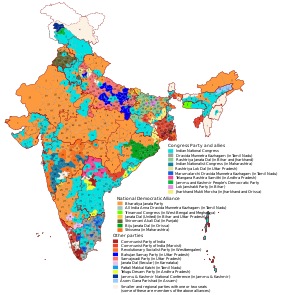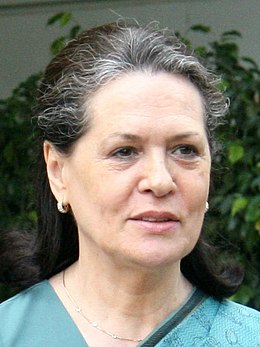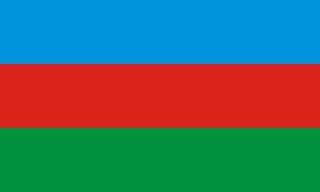This article needs additional citations for verification .(June 2014) (Learn how and when to remove this template message) |
| ||||||||||||||||||||||||||||||||||||||||||||||||||||||||||||||||||||||||||
All 543 seats in the Lok Sabha 272 seats were needed for a majority | ||||||||||||||||||||||||||||||||||||||||||||||||||||||||||||||||||||||||||
|---|---|---|---|---|---|---|---|---|---|---|---|---|---|---|---|---|---|---|---|---|---|---|---|---|---|---|---|---|---|---|---|---|---|---|---|---|---|---|---|---|---|---|---|---|---|---|---|---|---|---|---|---|---|---|---|---|---|---|---|---|---|---|---|---|---|---|---|---|---|---|---|---|---|---|
| ||||||||||||||||||||||||||||||||||||||||||||||||||||||||||||||||||||||||||
 | ||||||||||||||||||||||||||||||||||||||||||||||||||||||||||||||||||||||||||
| ||||||||||||||||||||||||||||||||||||||||||||||||||||||||||||||||||||||||||
Legislative elections were held in India in four phases between 20 April and 10 May 2004. Over 670 million people were eligible to vote, electing 543 members of the 14th Lok Sabha. The Lok Sabha, or "House of the People," is the directly elected lower house of the Parliament of India.
India is a federation with a parliamentary system governed under the Constitution of India, which defines the power distribution between the union, or central, government and the states.

India, also known as the Republic of India, is a country in South Asia. It is the seventh largest country by area and with more than 1.3 billion people, it is the second most populous country as well as the most populous democracy in the world. Bounded by the Indian Ocean on the south, the Arabian Sea on the southwest, and the Bay of Bengal on the southeast, it shares land borders with Pakistan to the west; China, Nepal, and Bhutan to the northeast; and Bangladesh and Myanmar to the east. In the Indian Ocean, India is in the vicinity of Sri Lanka and the Maldives, while its Andaman and Nicobar Islands share a maritime border with Thailand and Indonesia.
The 14th Lok Sabha was convened after the Indian general election, 2004 held in four phases during 20 April – 10 May 2004, which led to the formation of first Manmohan Singh ministry (2004–2009). Indian National Congress lead United Progressive Alliance won 62 more seats than previous 13th Lok Sabha. The Lok Sabha is the lower house in the Parliament of India. 8 sitting members from Rajya Sabha, the Upper House of Indian Parliament, were elected to 14th Lok Sabha after the Indian general election, 2004.
Contents
- Organisation
- Political background
- Pre-poll alliances
- Forecast and campaigns
- Results
- Support for formation of UPA-led Government
- Results by states and territories
- Results by Parties
- Results by alliances
- Elected MPs
- Results by post-alliance/allies
- Analysis
- Impact
- Events
- See also
- Further reading
- References
- External links
On 13 May, the ruling Bharatiya Janata Party (BJP) and its alliance National Democratic Alliance conceded defeat. The Indian National Congress, which had governed India for all but five decades from independence until 1996, returned to power after a record eight years out of office. It was able to put together a comfortable majority of more than 335 members out of 543 with the help of its allies. The 335 members included both the Congress-led United Progressive Alliance, the governing coalition formed after the election, as well as external support from the Bahujan Samaj Party (BSP), Samajwadi Party (SP), Kerala Congress (KC) and the Left Front. (External support is support from parties that are not part of the governing coalition).

The Bharatiya Janata Party is one of the two major political parties in India, along with the Indian National Congress. As of 2018, it is the country's largest political party in terms of representation in the national parliament and state assemblies, and it is the world's largest party in terms of primary membership. BJP is a right-wing party, and its policy has historically reflected Hindu nationalist positions. It has close ideological and organisational links to the Rashtriya Swayamsevak Sangh (RSS).
The National Democratic Alliance (NDA) is a coalition of Progressive centre-right to right-wing political parties in India. At the time of its formation in 1998, it was led by the Bharatiya Janata Party (BJP) and had 13 constituent parties. Its chairman was late Prime Minister Atal Bihari Vajpayee. Also representing the alliance are L. K. Advani, former Deputy Prime Minister, who is the acting chairman of the Alliance, Narendra Modi, current Prime Minister and the Leader of the House in Lok Sabha; and Arun Jaitley, Leader of the House in Rajya Sabha and Finance minister. The coalition ruled from 1998 to 2004. The alliance returned to power in the 2014 General election with a combined vote share of 38.5%. Its leader, Narendra Modi, was sworn in as Prime Minister of India on 26 May 2014.

The Indian National Congress(
Congress President Sonia Gandhi surprised observers by declining to become the new prime minister, instead asking former Finance Minister Manmohan Singh, a respected economist, to head the new government. Singh had previously served in the Congress government of Prime Minister Narasimha Rao in the early 1990s, where he was seen as one of the architects of India's first economic liberalisation plan, which staved off an impending national monetary crisis. Despite the fact that Singh had never won a Lok Sabha seat, his considerable goodwill and Sonia Gandhi's nomination won him the support of the UPA allies and the Left Front.

Sonia Gandhi

The Prime Minister of India is the leader of the executive of the Government of India. The prime minister is also the chief adviser to the President of India and head of the Council of Ministers. They can be a member of any of the two houses of the Parliament of India—the Lok Sabha and the Rajya Sabha —but has to be a member of the political party or coalition, having a majority in the Lok Sabha.

Manmohan Singh is an Indian economist and politician who served as the Prime Minister of India from 2004 to 2014. The first Sikh in office, Singh was also the first prime minister since Jawaharlal Nehru to be re-elected after completing a full five-year term.
Seven states also held assembly elections to elect state governments along with the parliamentary elections.















